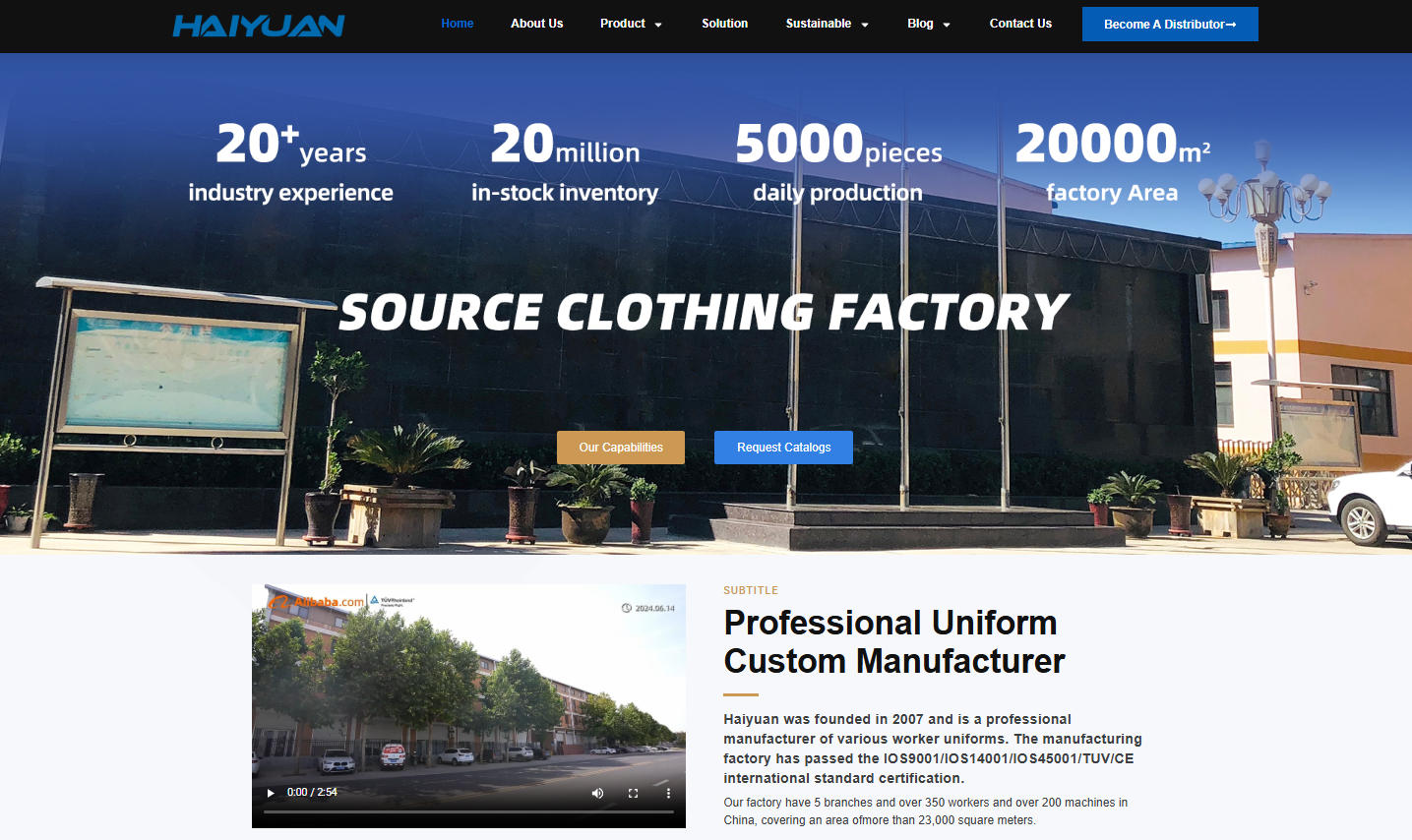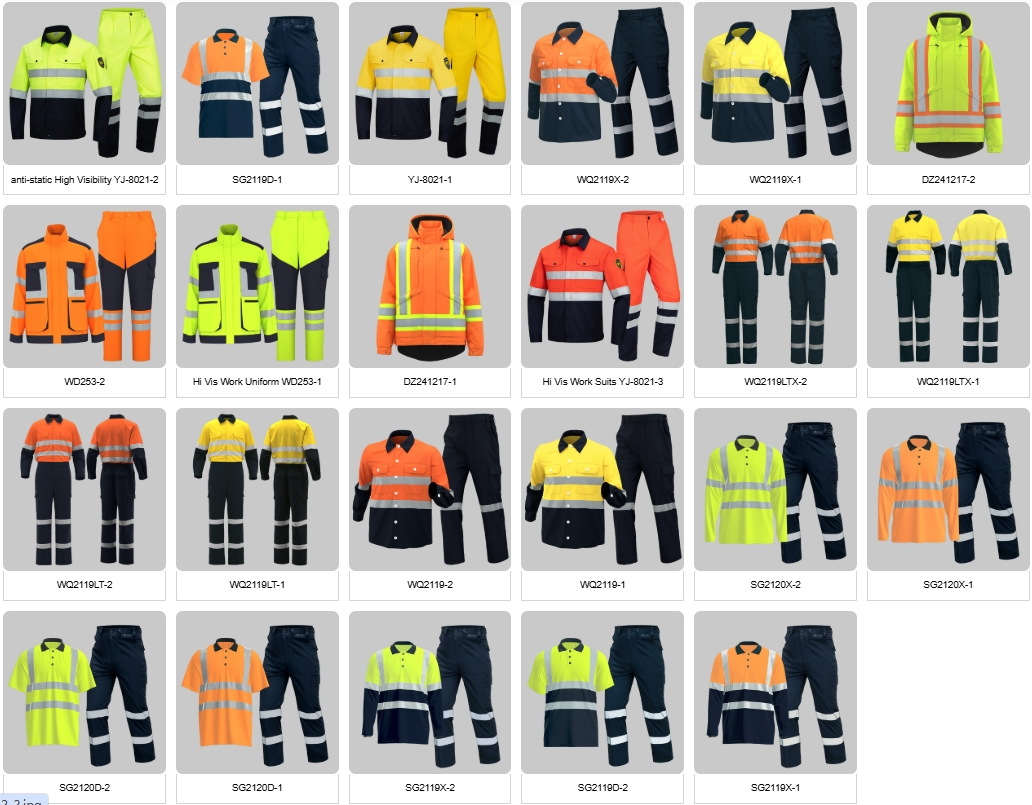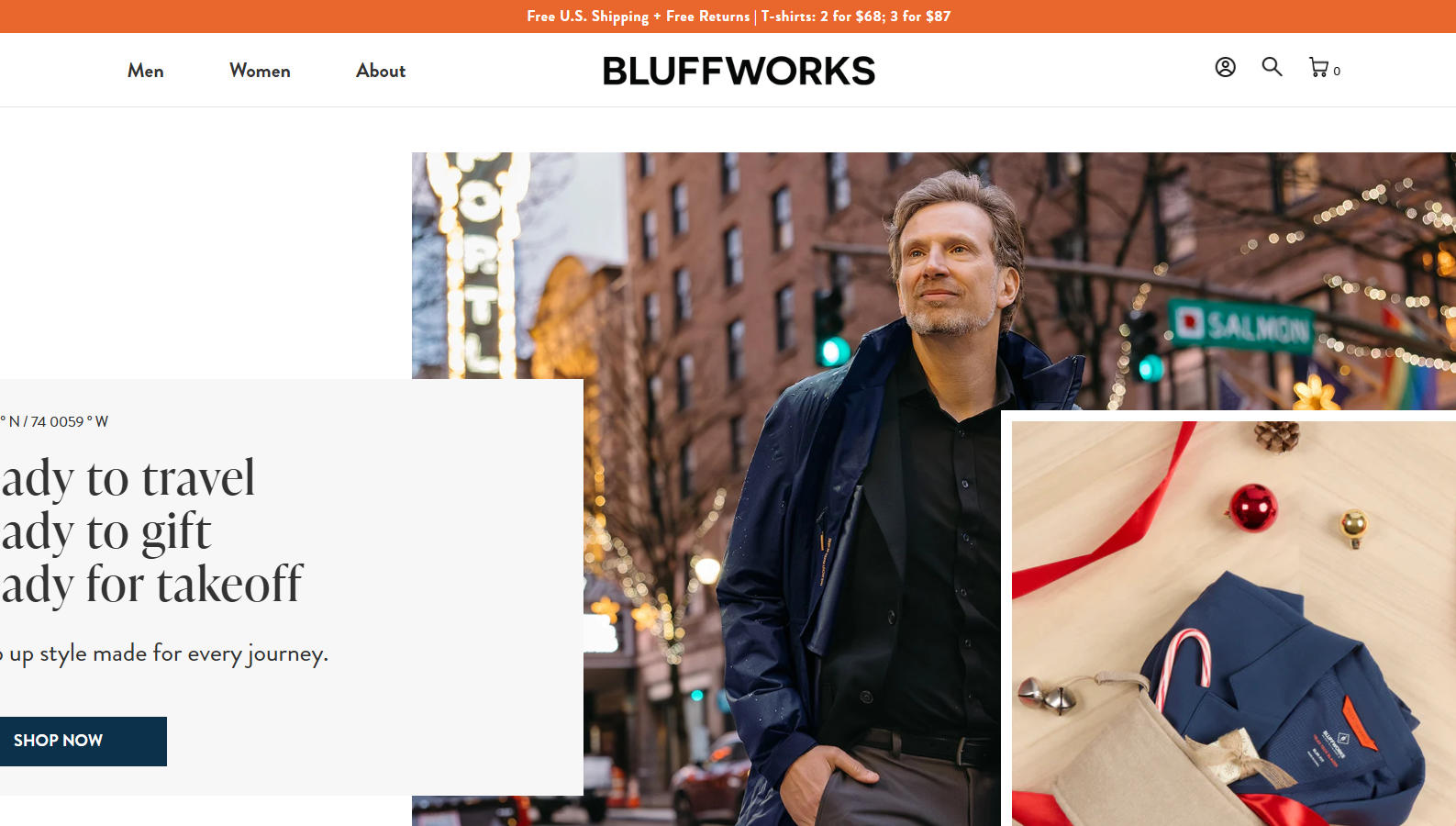The business model of a Russian company importing custom logo work uniforms from China is a well-established and practical trade route. However, the current geopolitical and economic landscape has introduced new complexities.
Here is a comprehensive breakdown of the process, current advantages, challenges, and key considerations for a Russian company in this trade.
Overview: Why This Model is Attractive for Russia
-
Cost-Effectiveness: Despite logistical cost increases, Chinese manufacturing often remains more competitive than domestic or European alternatives for bulk orders.
-
Production Capacity & Customization: Chinese factories are highly flexible and efficient at producing custom-made items with logos, specific fabrics, and designs. They can handle large and small orders.
-
Variety: Access to a vast range of materials suitable for different Russian climates and industries (corporate, industrial, hospitality, medical).
The Step-by-Step Import Process (Updated for Current Context)
Phase 1: Sourcing and Planning (in Russia)
-
Client Needs & Design: The Russian company secures an order from a local business (e.g., oil & gas company, bank, restaurant chain). They finalize designs, fabrics, colors, and logo specifications.
-
Supplier Sourcing: Finding a reliable partner in China is key. This can be done via:
-
B2B Platforms: Alibaba, Made-in-China.com. (Note: Due to sanctions, some Russian companies may face difficulties with international payments and platforms, requiring workarounds).
-
Sourcing Agents: Hiring an agent in China (e.g., in Yiwu or Guangzhou) has become more critical to vet factories, handle communication, and ensure quality.
-
B2B Relationships: Direct contact with factories that are still willing and able to trade with Russian entities.

haiyuan clothing factory
-
Phase 2: Negotiation and Production
-
Sample Production: This step is non-negotiable. The Russian company must approve a physical sample to check quality, fit, and logo application (embroidery, printing). Shipping samples to Russia can now take longer.
-
Contract and Payment: This is the most challenging step currently.
-
Payment Terms: International sanctions have disrupted traditional banking channels (like SWIFT). Companies now rely on:
-
Alternative banking channels (through third countries like Kazakhstan, Turkey, or UAE).
-
Cryptocurrencies.
-
Letters of Credit (L/C) from banks not participating in sanctions.
-
Trade with currencies like Chinese Yuan (RMB) or Hong Kong Dollars.
-
-
Incoterms: It’s crucial to clearly define responsibilities. FCA (Free Carrier) or EXW (Ex Works) at the Chinese factory are common, placing the logistics burden on the Russian importer.
-
Phase 3: Logistics and Customs Clearance (The Most Changed Aspect)
-
Logistics – The New Routes: The traditional rail route via Kazakhstan has become even more critical, while sea and air routes have been complicated.
-
Primary Route: China-Europe Railway -> Trans-Caspian Route or via Kazakhstan. Goods travel by rail from China to Kazakhstan, then can be transferred to other rail or truck transport into Russia. This route has seen a massive increase in volume.
-
Sea Freight: Complicated due to sanctions on shipping and insurance. If used, goods might go to ports in Turkey or the Caucasus (e.g., Novorossiysk) with significant delays and higher costs.
-
Air Freight: Very expensive and limited due to airspace closures and sanctions.
-
-
Customs Clearance in Russia:
-
The Russian company must handle import customs, which has become more stringent.
-
Essential Documents: Commercial Invoice, Packing List, Certificate of Origin, and transport documents (e.g., CMR waybill for road/rail).
-
Customs Broker: Hiring a reliable Russian customs broker is essential. They will handle the declaration, calculate import duties and VAT (typically 20%), and ensure compliance with all new regulations.
-
Key Advantages for a Russian Company (Currently)
-
Established Land Corridors: The overland rail and road routes through Central Asia are functional and have been scaled up, providing a physical link despite other logistical challenges.
-
Political Will for Trade: Both the Russian and Chinese governments are actively promoting bilateral trade and developing infrastructure to facilitate it, such as the “Power of Siberia” and other Belt and Road Initiative corridors.
-
Domestic Market Need: The demand for affordable, quality workwear in Russia’s vast industrial and corporate sectors remains high.
Challenges and Risk Mitigation (Post-2022 Context)
-
Payment Processing: This is the #1 challenge.
-
Mitigation: Work with Chinese banks that have strong relationships with Russian counterparts, use intermediaries in third countries, or explore alternative payment systems like SPFS (Russia’s financial messaging system) or CIPS (China’s Cross-Border Interbank Payment System).
-
-
Logistical Delays and Costs: Transit times are longer and less predictable. Freight costs have increased significantly.
-
Mitigation: Plan for much longer lead times (60-90 days instead of 30). Build strong relationships with logistics providers specializing in the China-Russia corridor. Diversify routes if possible.
-
-
Quality Control: The risk of receiving sub-standard goods is heightened when direct travel and communication are more difficult.
-
Mitigation: The role of a sourcing agent in China for pre-shipment inspection is more critical than ever. Do not skip the sample stage.
-
-
Supplier Reliability: Some Western brands have left Russia, but Chinese suppliers are generally still open for business. However, due diligence is key to ensure they are reliable and understand the complexities of exporting to Russia.
-
Currency Fluctuation and Sanctions Risk: The economic environment is volatile.
-
Mitigation: Use stable currencies like Yuan for contracts. Work with legal and financial advisors who specialize in Russia-China trade under the current sanctions regime.
-
Tips for Success
-
Partner, Don’t Just Buy: Develop a deep, strategic partnership with 1-2 reliable Chinese factories and a good sourcing agent. Trust and clear communication are invaluable.
-
Master the Logistics: Partner with a freight forwarder that has a proven track record on the China-Russia route. They are worth their weight in gold.
-
Be Flexible and Patient: Lead times, costs, and regulations are fluid. Successful companies are those that can adapt quickly.
-
Focus on Value, Not Just Price: In a complex environment, the reliability of a supplier and the quality of the product can be more important than saving a few cents per unit.
In conclusion, a Russian company can absolutely continue to import custom work uniforms from China. While the process has become more complex, expensive, and fraught with financial and logistical hurdles, the fundamental drivers of the trade—cost, capacity, and customization—remain strong. Success now depends on navigating the new realities with expert partners and a highly adaptable strategy.
For some insightful reads, we’ve curated a list of recommended articles just for you:
- How do I find a product manufacturer in China?
- How to find cheap manufacturers in China? A guide to avoid pitfalls
- How to complete your first purchase of workwear in China safely and efficiently
- Custom uniforms for Small business
- Choosing the Best Industrial Work Suit
- Ultimate Guide: Best Wholesale Work Clothes in China
- Cut & Sew Customization
- Logo Customize Clonthing Manufacturer
- Labour Uniform manufacturer
- Labor clothing uniform for sale
- Working clothes china wholesale
Can’t find what you’re looking for? Feel free to contact us. We’re here to help 24/7.
Useful links:





